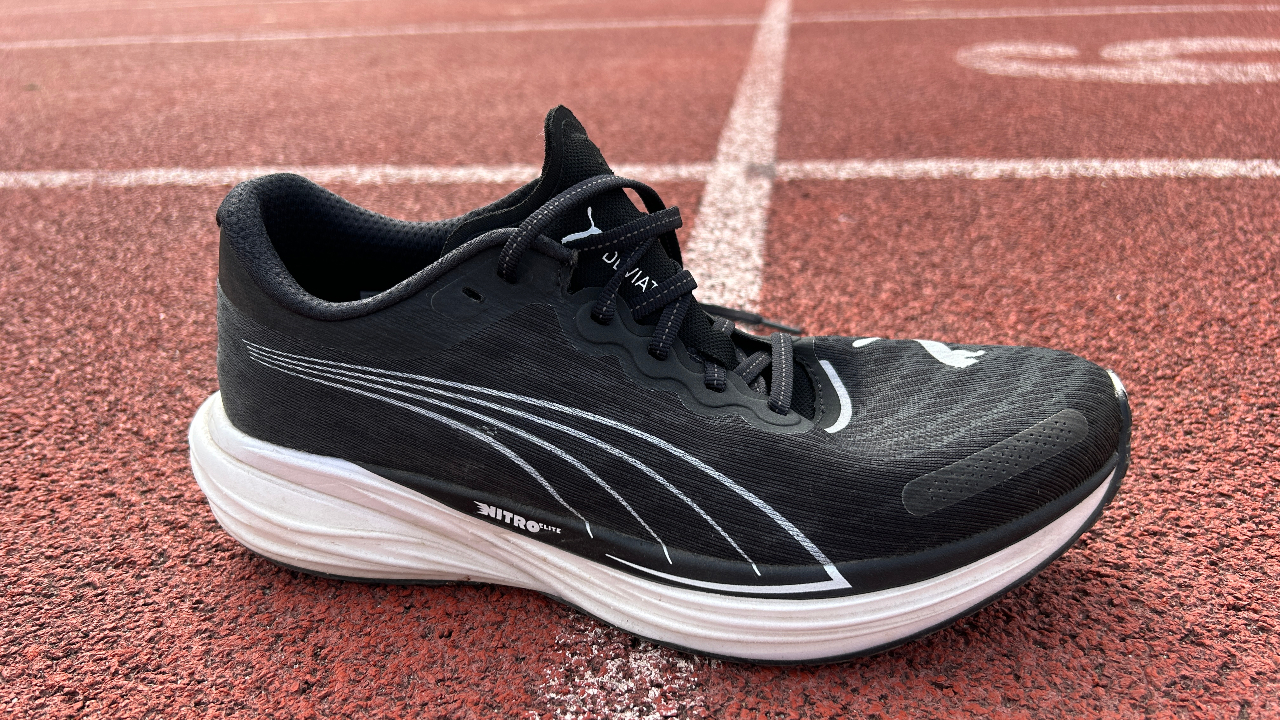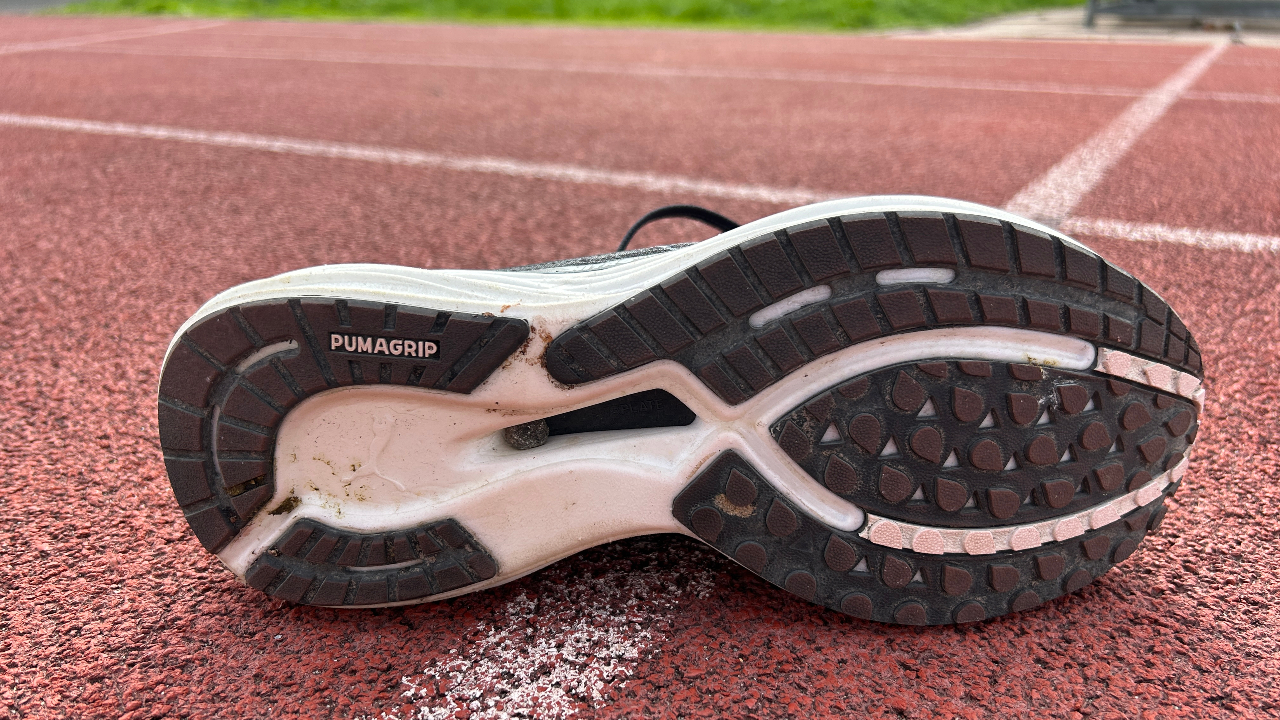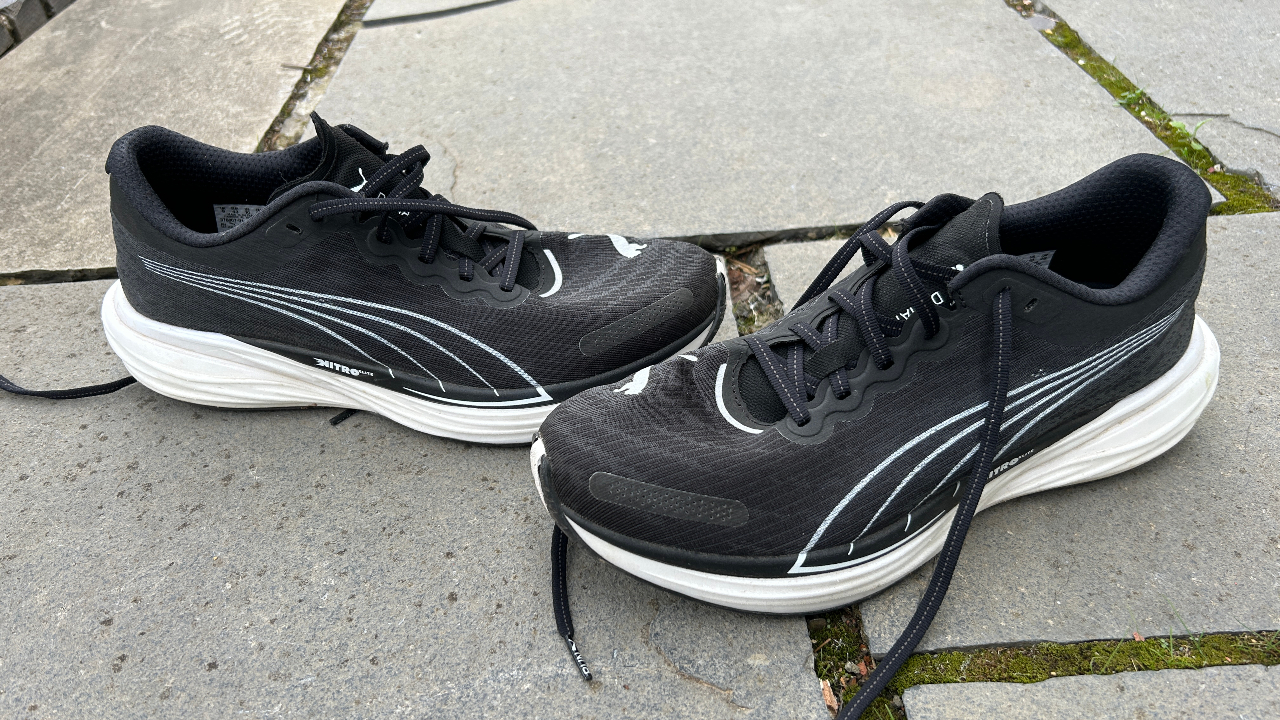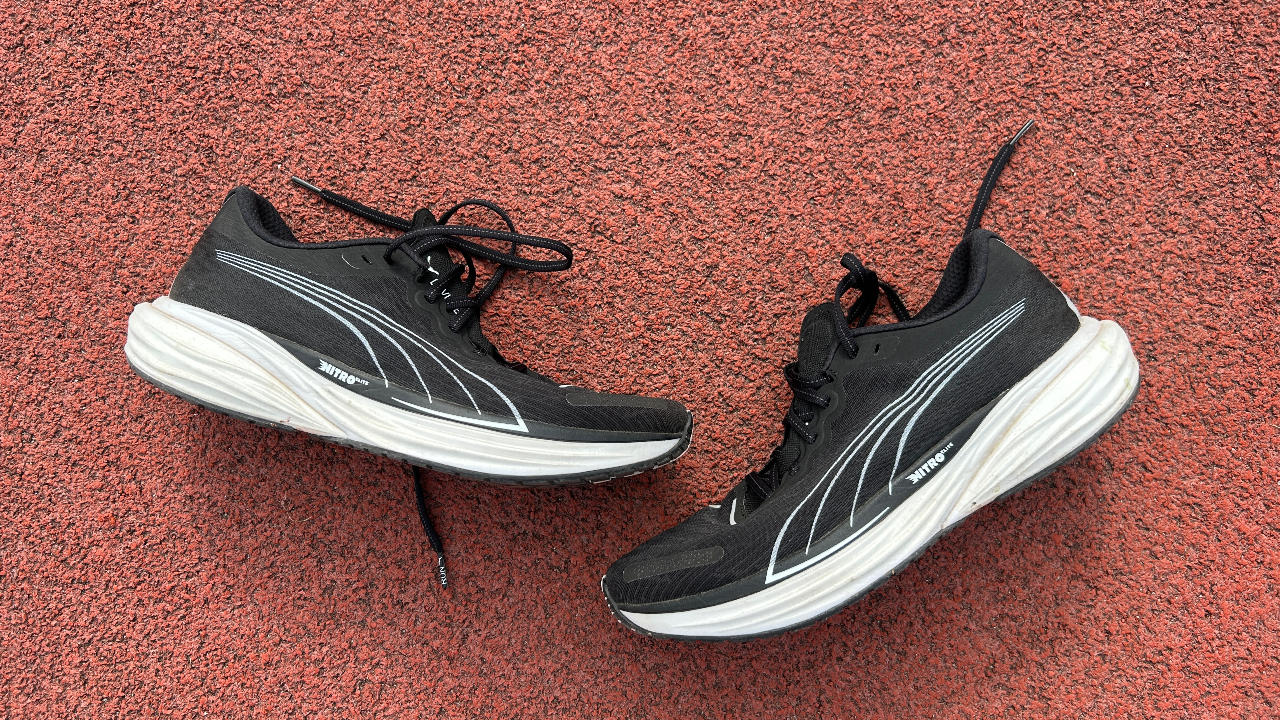Our Verdict
Not content with fixing the heel rub problems that blighted the original Deviate Nitro, Puma has also upgraded the midsole on the Nitro 2, and it’s one of the best all-round shoes available.
For
- Versatile
- Impressive outsole
- Improved upper
Against
- Heavier than alternatives
- Muted ride
You can trust Coach
The original Deviate Nitro was meant to be the star in Puma’s latest range of running shoes. It was a carbon plated trainer/racer with a nitrogen-infused outsole, and it was great. It would have been one of the best running shoes available, if not for the flawed heel design that rubbed my achilles raw, and did the same to many other runners.
Puma has fixed the heel on the Deviate Nitro 2, but that’s just the start of the updates to the shoe, which has an upgraded midsole and outsole. It doesn’t deliver the most exciting ride, but the Deviate Nitro 2 is one of the most versatile running shoes I’ve tested this year: fast, comfortable and equipped to grip on light trails as well as roads.
Puma Deviate Nitro 2: Price And Availability
The Puma Deviate Nitro 2 is available in the UK now and costs £140. It’s yet to launch in the US, but since the UK price is the same as the original we’d expect it to still be $160.
Design And Fit

The one thing Puma had to fix on the Deviate Nitro 2 was the heel design, and that has been achieved by adding extra padding to cradle the achilles and eliminate the rubbing that happened with the original shoe. It’s almost too padded now, in fact – that section of the upper soaks up lots of sweat during runs and takes a long time to dry.
Puma used its nitrogen-infused thermoplastic polyether ester elastomer (TPEE) Nitro foam for the midsole on the original Deviate Nitro, and it’s still employed in the bottom layer of the midsole on the 2. However, on top there is now a layer of the company’s Nitro Elite foam, which is a nitrogen-infused PEBA-based material. Nitro Elite is lighter, softer and bouncier than standard Nitro, and is used on Puma’s top carbon racing shoes like the Deviate Nitro Elite.
The layer of Nitro foam is thicker at the heel of the shoe to create more stability, whereas at the front of the shoe the larger chunk of Nitro Elite creates a bouncier toe-off.
Running through the midsole is a plate that’s 70% carbon and 30% thermoplastic polyurethane (TPU). The advantage of not having a full carbon plate is that the shoe is more flexible and comfortable while still having the added pop of the plate, but it’s not as stiff and speedy as a full carbon plate.
Sign up for workout ideas, training advice, reviews of the latest gear and more.

The Deviate Nitro 2 has a heel stack height of 36.5mm and forefoot height of 28.5mm, giving the shoe an 8mm drop. It weighs 9.7oz/276g in my UK size 9, which is not light for a plated training shoe, though it’s not particularly heavy. Part of the reason for that weight is the thick PUMAGRIP outsole, which delivers superlative grip in the wet and is also great on light trails like canal towpaths.
The rear section of the outsole uses Puma’s PUMAGRIP ATR rubber to be more durable and grip better on rough terrain. The mesh upper has two strips of Puma’s PWRTAPE on it to add more structure, especially on the inner side of the shoe. In my normal size, I found the fit to be spot-on.
How I Tested This Shoe
I have run 75km in the Puma Deviate Nitro 2 across a range of runs, from easy efforts to track and road workouts. I also tested the Deviate Nitro and have tried most of Puma’s Nitro range.
Running Performance

I expected a speed-focused shoe built along the lines of the Saucony Endorphin Speed 3 when I pulled on the Deviate Nitro 2, and for that reason it disappointed me over my first couple of runs. It was comfortable, and on a progression run I found it easy to move through the gears towards the end, but the ride lacked bounce and I wasn’t sure it would cope with faster workouts, partly because it’s a pretty heavy shoe.
Since then, however, I have come to like the Deviate Nitro 2 more and more, and I no longer have any doubts about its versatility. I’ve used it for two workouts, one running 20 sets of 60 seconds on and 30 seconds off, and another on a track running controlled 800m reps with steady 400m recoveries to average under 3min 30sec/km for 6km. You don’t feel the speed in the shoe, but it’s there, and it’s protective and comfortable on easy runs as well.
The outsole is a huge strength and a minor weakness for the Deviate Nitro 2. The grip it delivers is excellent and I’ve done three fast runs in it where I spent time off-road on mild trails, like canal towpaths and a disused railway line. The terrain is hardly rough, but I don’t enjoy doing workouts on it in most carbon shoes, or even the Endorphin Speed 3, which has nothing like the grip of the Puma.
However, the price you pay for that grip is the Deviate Nitro 2’s extra weight and slightly muted ride. It’s not as springy as you might expect given the excellent foams in the midsole, and the weight counts against it on long, hard runs, when the lighter, smoother Speed 3 excels.

Puma could perhaps reduce the amount of rubber on the outsole to make the Deviate Nitro 2 speedier, but it is a feature that makes the shoe more versatile and it still has enough pace to handle your workouts well. I’d say it’s not a great racing option when you’re on well-maintained roads, and it’s certainly a training shoe first and a racer second in general, whereas the Speed 3 is a versatile option that tilts more towards the fast stuff.
I remain unconvinced about the Deviate Nitro 2’s comfort on long runs. It’s not a harsh shoe and I was happy running in it up to around 13 miles during my testing, but if you were marathon training you might want a softer option for relaxed long runs.
Is The Puma Deviate Nitro 2 Worth It?
The Deviate Nitro 2 is a top-notch all-round running shoe, and just about the perfect training partner to a carbon plate super-shoe. It can handle most of your daily training runs well, and you can happily stray off-road when you want due to the excellent outsole. Then I’d switch to a top carbon plate racing shoe for your key speed sessions and races.
If you’re a one-shoe runner it’s one of the best options, but the Saucony Endorphin Speed 3 is a tad nippier and lighter – it would be a better pick for those who stick to the roads and want a shoe to shine on race day.

Nick Harris-Fry is a journalist who has been covering health and fitness since 2015. Nick is an avid runner, covering 70-110km a week, which gives him ample opportunity to test a wide range of running shoes and running gear. He is also the chief tester for fitness trackers and running watches, treadmills and exercise bikes, and workout headphones.

